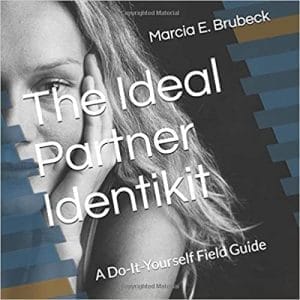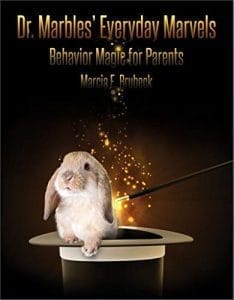
How to Be a Stepparent
I’ve been a stepparent, and I’ve had a stepparent. If this history doesn’t make me sound like an expert, let me say that as a psychotherapist I’ve listened to dozens of stepparents, their spouses, and their stepchildren. Stepparents have a tough job, but a few principles can make it doable and can help keep the peace.
In defining the stepparent’s place in the family, it is important to bear in mind the perspective of the children. Usually the situation that brought the stepparent on the scene was one that was not to the children’s liking: a divorce or the death of a biological parent. This event effectively destroyed the children’s world, namely the original nuclear family. Once the two biological parents have gone their separate ways and have perhaps chosen new partners, the children feel more precariously situated. They may think they no longer belong anywhere.
The custodial parent of course picks the stepparent and brings him or her into the household. The children have no say in the matter. Once the stepparent is on board, the result is a blended family. Family dynamics are perhaps less complicated if the original parent and the stepparent both have children of their own than if the stepparent is childless. When both adults have children, both naturally command authority as parents. Their offspring are likely to feel less isolated if the new family brings them new brothers and sisters. Stepparents who have never had children of their own have a difficult row to hoe.
Let’s consider the childless stepmother and childless stepfather in turn. The problems they confront are similar overall but may exhibit some gender-related differences.
The formerly childless stepmother is in a dicey position where her spouse and the children are concerned. Newly recruited for the job, she is often eager to dazzle her husband with her mothering skills. She plans to feed and clothe the children, to teach them manners, to make sure their homework is done, and to deal with school and doctors. Her new husband will be proud of her!
If the children’s biological mother is a nearby presence in their lives, the stepmother risks making the children feel disloyal. They may be angry that their biological mother is no longer on the scene. If they resent the stepmother’s directives, they may rebel: “I don’t have to listen to you! You’re not my mother!” If they are actually angry with their biological mother, it will be easier for them to vent their feelings on the stepmother than on the biological parent, particularly since they fear abandonment by a biological parent but not by a stepparent, who is not important from the child’s point of view. In such situations, the stepmother may turn to her spouse for support. The children’s father may wind up feeling pulled in one direction by his new wife and in another direction by his offspring.
The formerly childless stepfather often casts himself in the role of head of the new household. As such, he feels that he should set the family rules, determine how children are disciplined, and generally be regarded as head honcho. The children may bridle, as in the situation involving a stepmother described above, or they may attempt to please him. If he is very demanding or hard to please, he may be a source of misery for the kids: no matter what they do, their efforts seem never to suit him.
If his views of parenting differ from those of the children’s mother, the stage is set for tensions between the adults that will play out on the children. The mother will feel pulled between the two camps. In addition, she may resent the well-intentioned efforts of her spouse, who does not realize that a mother must stay true to her own sense of duty to her children because she, and not he, is responsible for them. She cannot in good conscience simply defer to his judgment, because, as the biological parent, she needs to feel that she acted in accordance with her own values.
If the stepparent and the children’s biological parent get together to produce children of their own, these children are likely to occupy a privileged place in the family. Unlike the other children, the new children have an intact nuclear family. Consequently they have a sense of belonging somewhere that the stepchildren lost when their biological parents separated.
If there are tensions between the adults in the blended family, these tensions are likely to play out on the stepchildren rather than the biological children. The stepchildren may unwittingly illuminate differences in the adults’ views of family and parenting. These kids will then supply an arena in which the grownups can conduct their power struggle, which often masks communication and other relationship problems between them. Any behavioral issues or trouble at school that the stepchildren have will add fuel to the conflict.
How can these difficulties and related problems be avoided? I recommend the following principles for stepparents. To follow them, formerly childless stepparents must accept that they can parent children who are not their own only if the children, as well as the biological parent on hand, truly want them to. If the children do not want a new parent, the stepparent’s efforts to become one will probably make everyone unhappy.
1. Do not discipline a child who is not biologically yours. Only the biological parent should discipline the child. Share your feelings with the biological parent out of the child’s earshot.
2. Do not tell the child’s biological parent how to raise the child. Take direction from the biological parent and provide emotional and moral support for that parent. Stepparents should give advice only when they are asked to do so.
3. If your spouse or the children are behaving in ways that bother you, learn how to take care of yourself. If you don’t make your peace of mind depend on what other people do you will be less interested in controlling them. Practice good boundaries: know the difference between your stuff and other people’s stuff. Share your misgivings about the child’s behavior with your spouse out of the child’s earshot.
4. Do not interfere in the biological parent’s co-parenting relationship with an ex. Do not insert yourself between the biological parent and the ex as if you were the parent or as if you were your spouse’s agent. The children’s biological parents must collaborate as parents even if they are no longer together.
5. Strive to be a friend to your spouse’s children without telling them what to do unless the children ask you for your opinion. The gold standard is a human-being-to-human-being, or mentoring, relationship.
6. Listen to the children, respect their loyalty to their biological parents, and try to empower them. Try inviting them to give their advice or opinions, listening and asking questions for better understanding, and having them teach you things that they know and you do not.
7. Do not compete with the children for the attention of your spouse. Recognize that the children need alone time with your spouse and possibly with your spouse and his or her ex together. Respect the children’s ties and loyalty to their biological parents.
8. If you bring a baby into the blended family, be sure all children in the family have equal standing even if they visit or live with you only part time; they should all be “our children,” with no reference to “Sue’s daughter,” for example, to distinguish the stepchild from the other kids.
9. Remember that the biological parent must honor an inborn sense of duty and obligation to the children that the stepparent, lacking the biological ties, cannot possibly feel. The biological parent needs to do the right thing by his or her child. You cannot understand this need unless you yourself have fathered a child or given birth to one.





